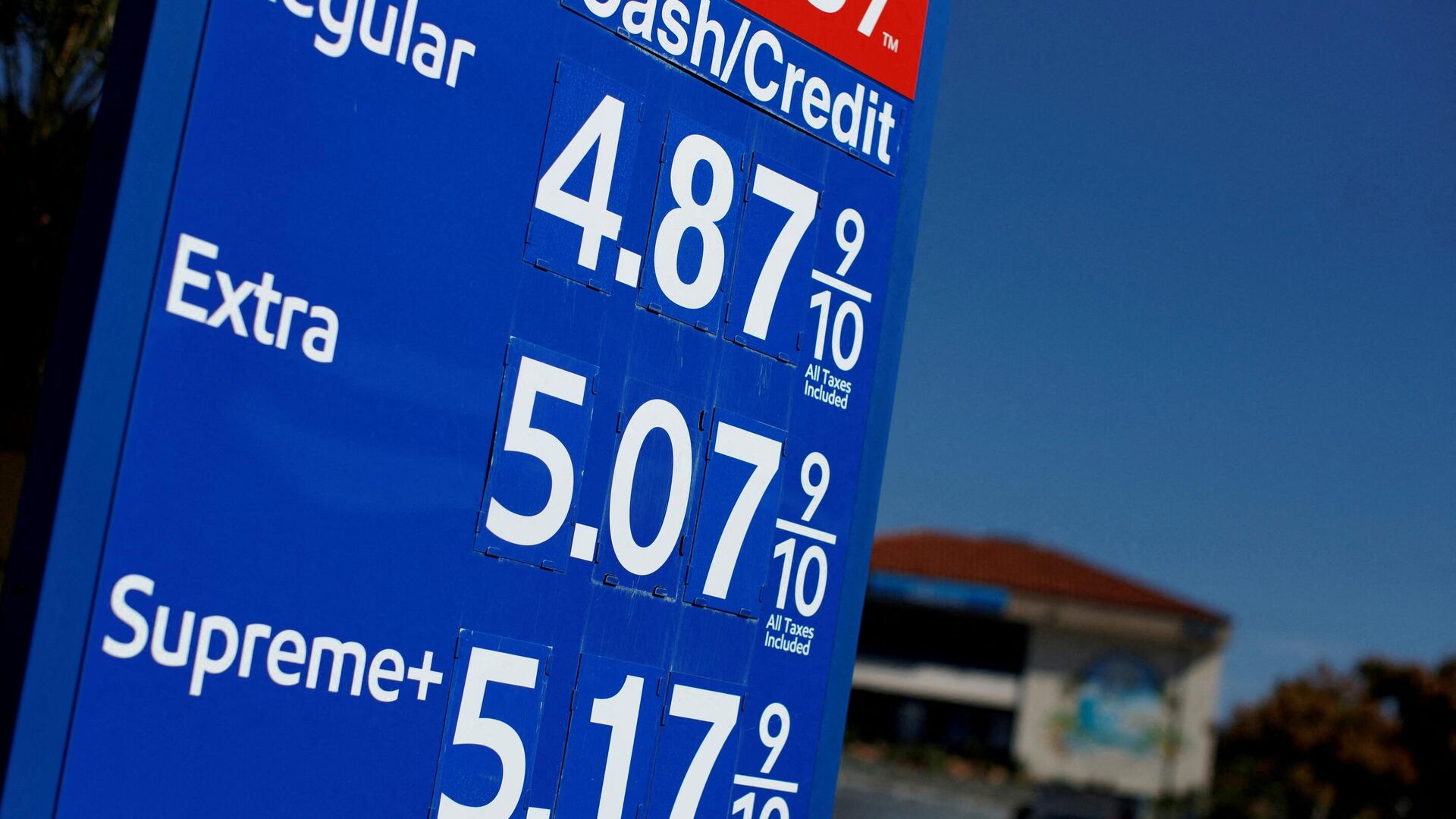https://sputnikglobe.com/20220325/americans-more-worried-about-inflation-now-than-during-80s-and-2008-recessions-survey-shows-1094199403.html
Americans More Worried About Inflation Now Than During ‘80s and 2008 Recessions, Survey Shows
Americans More Worried About Inflation Now Than During ‘80s and 2008 Recessions, Survey Shows
Sputnik International
WASHINGTON (Sputnik) - Americans are more worried about inflation now than they were during the worst two US recessions in the 1980s and in 2008, the... 25.03.2022, Sputnik International
2022-03-25T17:15+0000
2022-03-25T17:15+0000
2022-08-06T13:29+0000
survey
inflation
us
https://cdn1.img.sputnikglobe.com/img/07e6/03/19/1094199377_0:218:2867:1831_1920x0_80_0_0_914517ae43701e77fcced9da13e76344.jpg
UMmich’s Consumer Sentiment Index, updated every two weeks, remained at August 2011 lows, while worries about inflation appeared to grow more dire in a nation where consumer spending makes up to 70% of the economy, Curtin said.US gross domestic product (GDP) grew 5.7% last year, expanding at its fastest pace since 1984. But inflation, as measured by the Consumer Price Index (CPI), grew at an even faster rate, expanding by 7% in 2021, its most since 1981.The CPI has continued to expand beyond expectations this year, reaching a year-on-year growth of 7.9% in February versus an expected GDP growth of 2.8% forecast for all of 2022 by the Federal Reserve. The US central bank’s tolerance for inflation is 2% per year and it vowed to slow price growth with a series of interest rate hikes through next year.Even so, the latest UMich survey showed that 32% of the consumers expected their overall financial position to worsen in 2023, to levels highest recorded since its surveys started in the mid-1940s.Curtin said the deteriorating public confidence in US economic policy worsened the problem and, unfortunately, half of all consumers unfavorably assessed current policies - more than three times the 16% who rated them favorably.The only area where consumers appeared to be confident about the economy was in jobs and wages growth, and therein was “the self-fulfilling prophecy” for even higher inflation, Curtin said.On Wednesday, Federal Reserve Bank of St. Louis President James Bullard US unemployment could hit seven-decade lows of beneath 3% this year as the economy continues to recover.Unemployment among Americans reached a record high of 14.8% in April 2020, with the loss of some 20 million jobs in the aftermath of the coronavirus breakout. Jobs recovery has, however, been stellar over the past year, with the jobless rate moving down to 3.8% in February. A jobless rate of 4% or below is regarded by the Federal Reserve as maximum employment.
Sputnik International
feedback@sputniknews.com
+74956456601
MIA „Rosiya Segodnya“
2022
Sputnik International
feedback@sputniknews.com
+74956456601
MIA „Rosiya Segodnya“
News
en_EN
Sputnik International
feedback@sputniknews.com
+74956456601
MIA „Rosiya Segodnya“
Sputnik International
feedback@sputniknews.com
+74956456601
MIA „Rosiya Segodnya“
survey, inflation, us
Americans More Worried About Inflation Now Than During ‘80s and 2008 Recessions, Survey Shows
17:15 GMT 25.03.2022 (Updated: 13:29 GMT 06.08.2022) WASHINGTON (Sputnik) - Americans are more worried about inflation now than they were during the worst two US recessions in the 1980s and in 2008, the University of Michigan (UMich) said in its Consumer Sentiment Survey on Friday.
“With an expected year-ahead inflation rate at 5.4%, the highest since November 1981, inflation was mentioned throughout the survey, whether the questions referred to personal finances, prospects for the economy, or assessments of buying conditions,” UMich’s Surveys of Consumers Chief Economist Richard Curtin said.
UMmich’s Consumer Sentiment Index, updated every two weeks, remained at August 2011 lows, while worries about inflation appeared to grow more dire in a nation where consumer spending makes up to 70% of the economy, Curtin said.
“When asked to explain changes in their finances in their own words, more consumers mentioned reduced living standards due to rising inflation than any other time except during the two worst recessions in the past fifty years: from March 1979 to April 1981, and from May to October 2008,” Curtin added.
US gross domestic product (GDP) grew 5.7% last year, expanding at its fastest pace since 1984. But inflation, as measured by the Consumer Price Index (CPI), grew at an even faster rate, expanding by 7% in 2021, its most since 1981.
The CPI has continued to expand beyond expectations this year, reaching a year-on-year growth of 7.9% in February versus an expected GDP growth of 2.8% forecast for all of 2022 by the Federal Reserve. The US central bank’s tolerance for inflation is 2% per year and it vowed to slow price growth with a series of interest rate hikes through next year.
Even so, the latest UMich survey showed that 32% of the consumers expected their overall financial position to worsen in 2023, to levels highest recorded since its surveys started in the mid-1940s.
Curtin said the deteriorating public confidence in US economic policy worsened the problem and, unfortunately, half of all consumers unfavorably assessed current policies - more than three times the 16% who rated them favorably.
"Making the situation even more difficult, policy makers need to take account of two unusual sources of economic uncertainty, one rather minor (the new COVID variant), and a major source of continued economic disruption (the Russian invasion of Ukraine),” he said.
The only area where consumers appeared to be confident about the economy was in jobs and wages growth, and therein was “the self-fulfilling prophecy” for even higher inflation, Curtin said.
“Strong job growth will continue to put upward pressures on wages, resulting in higher income and stronger job prospects,” he added.
On Wednesday, Federal Reserve Bank of St. Louis President James Bullard US unemployment could hit seven-decade lows of beneath 3% this year as the economy continues to recover.
Unemployment among Americans reached a record high of 14.8% in April 2020, with the loss of some 20 million jobs in the aftermath of the coronavirus breakout. Jobs recovery has, however, been stellar over the past year, with the jobless rate moving down to 3.8% in February. A jobless rate of 4% or below is regarded by the Federal Reserve as maximum employment.



